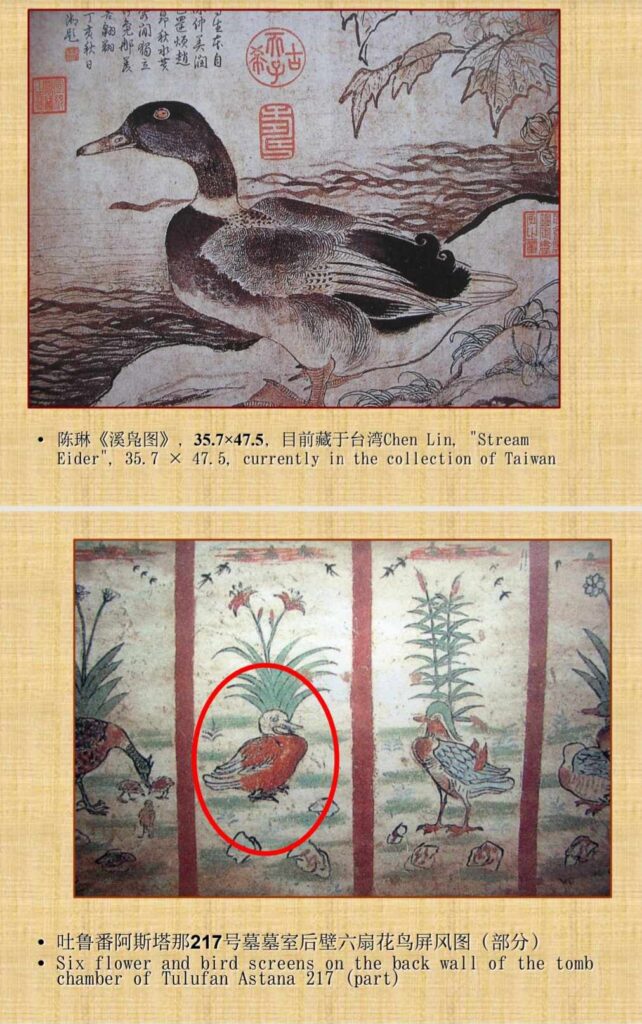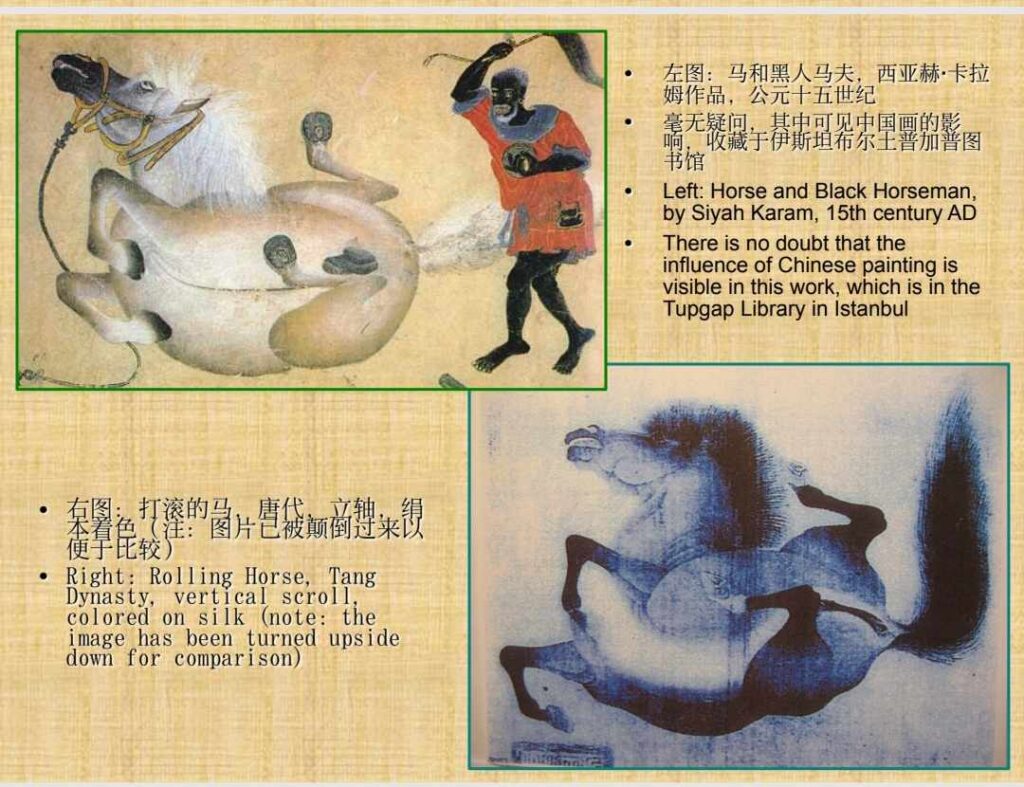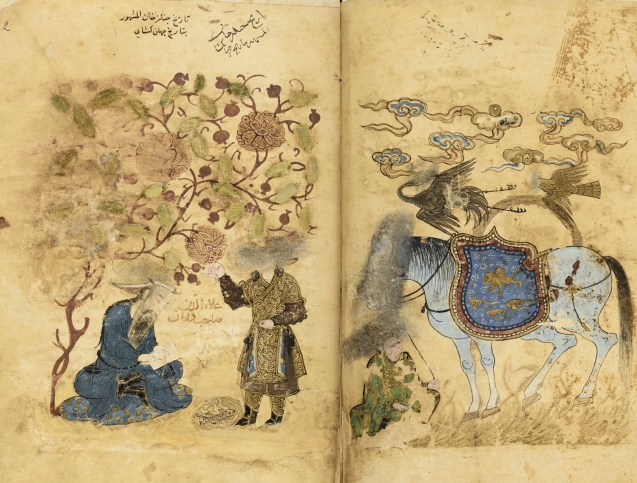How did Chinese painting influence miniature art? While researching the theoretical roots of Chinese painting, I came across Nasrin Dastan’s book “Chinese Elements in Iranian Miniature Paintings.” Although I couldn’t read the book, I did interview the author.
Let’s start by getting to know you.

I was born in Tehran, Iran. Throughout my education, I focused on Chinese art history, particularly the Han and Tang dynasties. I hold a Ph.D. in Chinese Art History from the Central Academy of Fine Arts in Beijing. Currently, I work as a sinologist at the Institute for Advanced Studies in the Arts (IASAR) affiliated with the Iranian Academy of Arts and serve as an Assistant Professor in the Department of Oriental Arts History. I also chair the Department of Oriental Arts at the Institute for Advanced Studies.
Can you tell us about Iranian miniature art and its evolution from past to present?
In Iranian miniatures, the artist is not subject to nature. Rather than copying nature as it is, the artist strives to create as much beauty and meaning as the viewer wants to see. This effort, combined with the artist’s imagination and aesthetic understanding, results in unique works. The art form is characterized by intricate details, delicate lines, and rich color palettes. Iranian miniature art holds a special place among the world’s painting schools. The intricacy, detail, and aesthetic elements in Iranian miniatures give this art a unique charm and appeal.
What is the significance of the Iranian miniature schools that began in the early centuries of Islam?
The Iranian miniature schools that began in the early centuries of Islam have left significant works. During this period, painting art merged with Arabic calligraphy, and the best copies of the Quran were written, decorated, and gilded by innovative Iranian artists. The border gilding, titles, and compositional rotations of Quran designs such as Sulus and Hatayi were invented in a unique way that we call stilze today. These artists demonstrated great mastery in creating beauty and meaning.
How do contemporary Iranian miniatures differ from traditional ones?
Contemporary Iranian miniatures are quite different from traditional ones. While old miniatures were based on traditional techniques and stylistic elements, today’s miniatures reflect influences from European classical paintings and modern art movements such as impressionism, with their perspective and realistic depiction of faces. This indicates that Iranian miniature art has modernized and incorporated European influences.
How did the Baghdad School and Seljuk School influence Iranian painting art, and what about the Mongol invasion period?
The Baghdad School, as a form of primitive painting, shows the lack of skill and artistic power of its creators and mostly contains stories and religious traditions. The artists of the Baghdad school were mostly Iranian, and they usually decorated manuscripts according to their own taste under the orders of Arab tribal leaders and governors. They spread their work to many nearby and distant regions of Iran.
In the Seljuk School, artists became familiar with Chinese paintings. Iranians combined the Chinese style of painting with their own artistic vision, and this style was prevalent in Iran long before the Mongol invasion. During the Seljuk period, Iranian painting made significant progress. The works of this period reflect the influences of Chinese paintings and the innovative approaches of Iranian artists.
After Genghis Khan’s attack on Iran, the Baghdad school completely disappeared, but the Seljuk school evolved during the Mongol period. Mongol leaders brought Chinese painters to Iran and tried to popularize Chinese painting. Iranian artists, unlike Chinese painters, never considered nature as the ultimate expression of emotions but focused more on human beings and human states. Iranian miniatures retained their ties to poetry, culture, and local ways of thinking, and this continued until the Ilkhanid and Timurid periods. During the Mongol period, artists focused more on human figures and emotions, which helped preserve the unique character of Iranian miniatures.
Why did you choose to study the influence of Chinese painting on Iranian miniatures?
While studying the Han and Tang periods of Chinese Art History, I discovered many cultural and artistic connections between China and Iran, from ancient Adura to the Silk Road. One of these connections was the influence on painting art. This topic intrigued me, and I decided to explore it further.
What are the main characteristics of Chinese painting, and how did it influence Iranian miniatures?
Chinese painting is deeply connected to Chinese philosophy and literature. This art form is often used to express concepts of beauty, peace, and harmony. The roots of Chinese painting lie in the desire to reflect people’s connections with nature and their inner worlds. According to traditional Chinese ideas, hard work, dynamism, and freshness are of great importance. Therefore, the essence of Chinese painting emphasizes the connection between humans and nature and the inner development of individuals.
Chinese painting, with a history of over 3000 years, is a traditional art form often done using black ink on paper and includes a wide variety of styles and techniques. Some popular styles of Chinese painting include landscape painting, bird and flower painting, and face painting.



Traditional Chinese painting is divided into two major methods and styles: the meticulous method (Gongbi 工笔) and the freehand method (Xie Yi 写意). In the meticulous method, attention to detail and beautiful display are important, while in the freehand method, shapes are depicted using a strong brush technique and ink. This technique emphasizes the connection between nature and humans and allows the artist to express their inner world.
Chinese painting has been known to Iranians for a long time. Chinese paintings entered Iran as painted curtains or as decorations on imported items. Iranians became familiar with Chinese painting and showed interest in it. Most of the influences of Chinese painting on Iranian art occurred after Islam and especially after the Mongol period. The greatest contribution of Chinese painting to Iranian miniature art was its meticulous use of detail and color.
How did Chinese painting influence Iranian miniature?
Iranians have been innovators and founders in miniature painting, a tradition rooted in Iran since ancient times. This style of painting traveled from Iran to China and then returned to Iran during the Mongol period. In the fifth century BC, during the Achaemenid dynasty, wall paintings in Iranian palaces depicting hunting scenes influenced Chinese painting. From the fifth century BC to the eighth century AD, Iranian painting had a significant influence on Chinese painting.
After the Mongols arrived in Iran, extensive cultural and economic relations between Iran and China were reestablished. The Mongols’ interest in painting and astronomy led to the development of these arts during their rule, creating a new link between Iranian and Chinese painting elements. During the Timurid era, Iranian artists developed a new school of painting, reaching its peak with master painters Mansour Mosur Heravi and Kamaluddin Behzad during the reign of Sultan Hossein Mirza Baiqra. At this time, Persian painting had no Chinese roots and was entirely Iranian.
The idea that Iranian painting was influenced by Chinese painting is not entirely accurate. While the two civilizations influenced each other culturally at certain points in history, these influences in the art of painting were entirely mutual.
